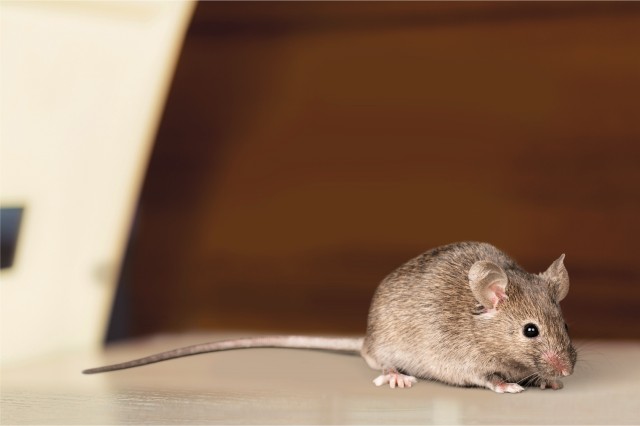AI Rodent Trap Systems for Supermarkets: A Must-Have Solution
Share
The dynamic world of retail is an ever-evolving landscape, with supermarkets constantly striving to provide their customers with the safest and most efficient shopping experience. One major hurdle they face is maintaining impeccable hygiene standards to prevent contamination of food products. With the rise of technology, a groundbreaking solution emerges: the AI rodent trap for supermarkets. This innovative approach not only addresses rodent control with heightened efficiency but also ensures supermarkets remain compliant with health regulations.
Rodent infestations have been the bane of food-related retail sectors, given their potential to cause significant product loss and health hazards. The advent of AI rodent traps presents a compelling argument for supermarkets to redefine pest control measures. By integrating artificial intelligence with tried-and-tested trapping mechanisms, supermarkets can now combat these pests with newfound precision.

How AI Transforms Traditional Rodent Control
Traditional methods of rodent control include traps and poisons, which, while effective to an extent, come with environmental and health risks. Conventional traps require manual checks, which can be time-consuming and ineffective if not monitored regularly. Here, the AI rodent trap for supermarkets demonstrates a significant advancement.
AI technology equips these traps with sensors and real-time monitoring systems that instantly alert store management of rodent activity. Such traps can identify and capture rodents swiftly, ensuring minimal human intervention and reducing the chances of human error. Automated data collection also allows for better strategic planning in identifying rodent hotspots within the store. For more on how technology enhances pest control, explore automated traps for farms.
Benefits of Using AI Rodent Traps in Supermarkets
The key benefits of implementing AI rodent traps in supermarkets are multifaceted. Firstly, they provide enhanced efficacy. With AI, tracking and capturing rodents becomes more efficient, leading to reduced occurrences of infestations. This inevitably results in a cleaner shopping environment, bolstering customer confidence and minimizing product waste.
Moreover, these systems are environmentally friendly compared to traditional rodenticides that introduce harmful chemicals into the ecosystem. AI traps adhere to a 'catch and contain' approach, ensuring that the welfare of other animals and humans remains protected. Supermarkets leveraging AI traps can remain compliant with rigorous health and safety standardsessential for retaining quality assurance in food retail. Read more on humane trapping techniques for a deeper understanding.
Implementing AI Rodent Technology in Retail Spaces
Integrating AI rodent trap systems in supermarkets requires thoughtful planning and execution. The initial step involves identifying areas within the store that are most susceptible to rodent activities, such as storage areas, garbage disposal sites, and cold rooms. By strategically placing AI traps in these locations, supermarkets can ensure optimal coverage and effectiveness.
A pivotal aspect of implementation is training staff members on how to respond to trap alerts and perform regular maintenance of AI systems. Supermarkets can also consider partnering with pest control companies that specialize in AI technologies to ensure smooth operations. Discover how to maintain a pest-free environment by visiting [Warehouse Rodent Control](https://boosbugstoppers.com/warehouse-rodent-control/).
Overcoming Potential Challenges and Concerns
While AI rodent traps offer numerous advantages, there are challenges that supermarkets may face. The initial cost of installation and the need for continuous system updates might pose financial concerns. However, these should be weighed against the long-term benefits of reduced waste and sanitation compliance.
Another concern is the integration of new technology with existing systems. It's crucial that supermarkets ensure compatibility and user-friendliness of these AI systems with their current pest control protocols. Engage with [Pest Control: The Essentials](https://www.food-safety.com/articles/3814-effective-pest-control-the-essentials-for-food-processing-plants-and-warehouses) for insights into effective implementation strategies.
Future of AI in Supermarket Pest Control
The future of grocery retail lies in the continual adaptation and integration of technology. As AI evolves, the scope of its applications will expand, offering supermarkets even more sophisticated tools for managing pests. The goal is a symbiotic relationship between technology and protocol, maximizing store hygiene and efficiency. For broader insights, see [Signs of Rodents in Warehouses](https://www.westernpest.com/blog/signs-of-rodents-in-warehouses/).

Conclusion: Embrace the Future of Rodent Control
In conclusion, the AI rodent trap for supermarkets signals an inevitable shift in the way retail operates in terms of pest control. Offering a host of benefits, from heightened efficiency to eco-friendliness, AI traps present a key solution to pest-related challenges in supermarkets. As consumer safety and hygiene continue to remain paramount, embracing these innovations becomes not just a preference but a necessity.
For more detailed advice and setups, check out our guide on pest control strategies.
Frequently Asked Questions
Q1: How does an AI rodent trap work?
A1: An AI rodent trap uses machine learning algorithms and sensory technology to detect, capture, and alert staff about rodents in real time, contributing to more efficient pest control.
Q2: Are AI rodent traps safe for food environments?
A2: Yes, these traps are designed to be safe for use in food retail environments, providing a chemical-free alternative to traditional pest control methods.
Q3: What are the costs associated with AI rodent traps?
A3: While initial costs may be higher compared to traditional methods, the long-term benefits such as reduced waste, compliance with health standards, and increased customer satisfaction make it a worthwhile investment.
This article contains affiliate links. We may earn a commission at no extra cost to you.
